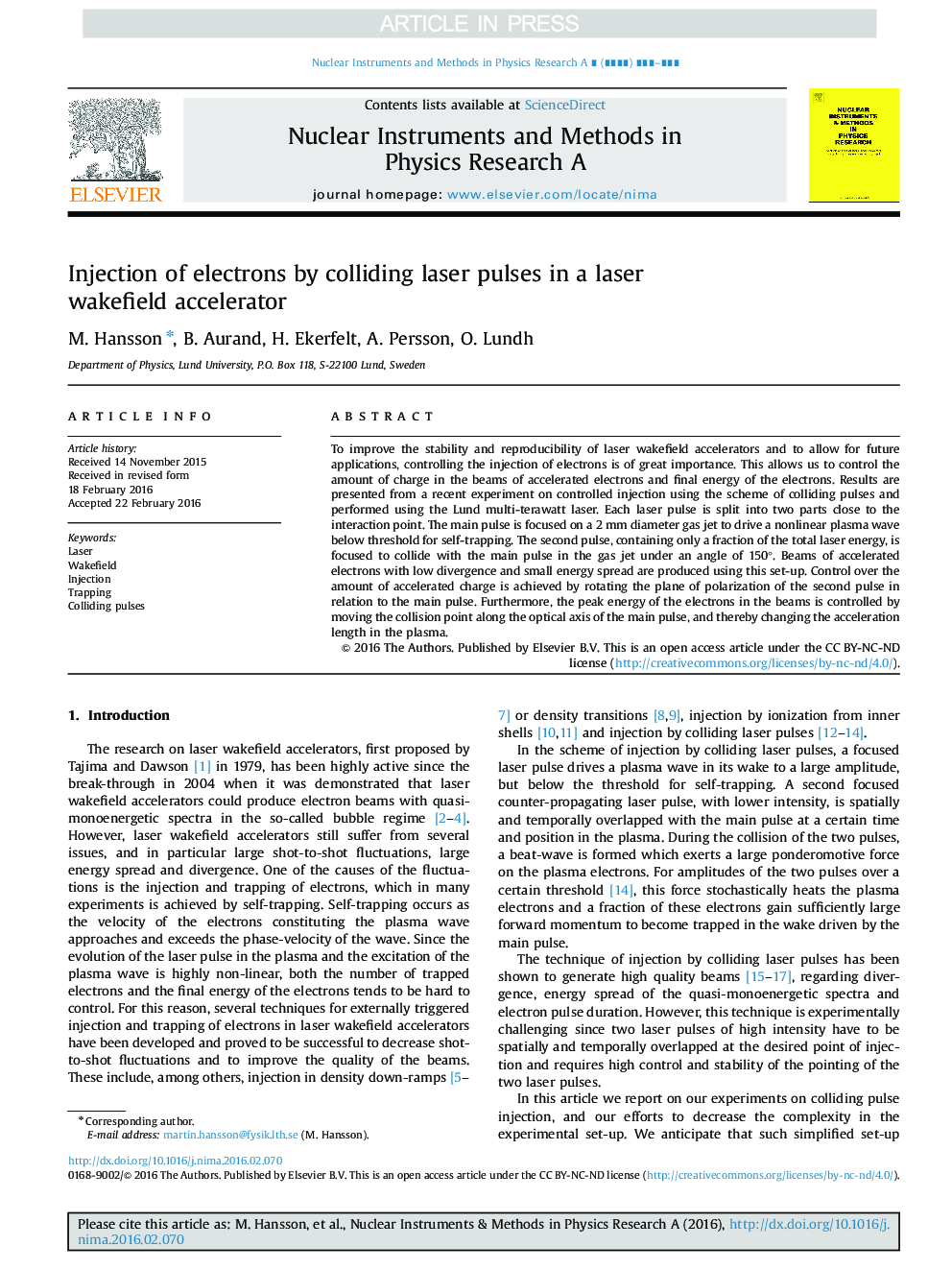| Article ID | Journal | Published Year | Pages | File Type |
|---|---|---|---|---|
| 8169120 | Nuclear Instruments and Methods in Physics Research Section A: Accelerators, Spectrometers, Detectors and Associated Equipment | 2016 | 5 Pages |
Abstract
To improve the stability and reproducibility of laser wakefield accelerators and to allow for future applications, controlling the injection of electrons is of great importance. This allows us to control the amount of charge in the beams of accelerated electrons and final energy of the electrons. Results are presented from a recent experiment on controlled injection using the scheme of colliding pulses and performed using the Lund multi-terawatt laser. Each laser pulse is split into two parts close to the interaction point. The main pulse is focused on a 2 mm diameter gas jet to drive a nonlinear plasma wave below threshold for self-trapping. The second pulse, containing only a fraction of the total laser energy, is focused to collide with the main pulse in the gas jet under an angle of 150°. Beams of accelerated electrons with low divergence and small energy spread are produced using this set-up. Control over the amount of accelerated charge is achieved by rotating the plane of polarization of the second pulse in relation to the main pulse. Furthermore, the peak energy of the electrons in the beams is controlled by moving the collision point along the optical axis of the main pulse, and thereby changing the acceleration length in the plasma.
Related Topics
Physical Sciences and Engineering
Physics and Astronomy
Instrumentation
Authors
M. Hansson, B. Aurand, H. Ekerfelt, A. Persson, O. Lundh,
